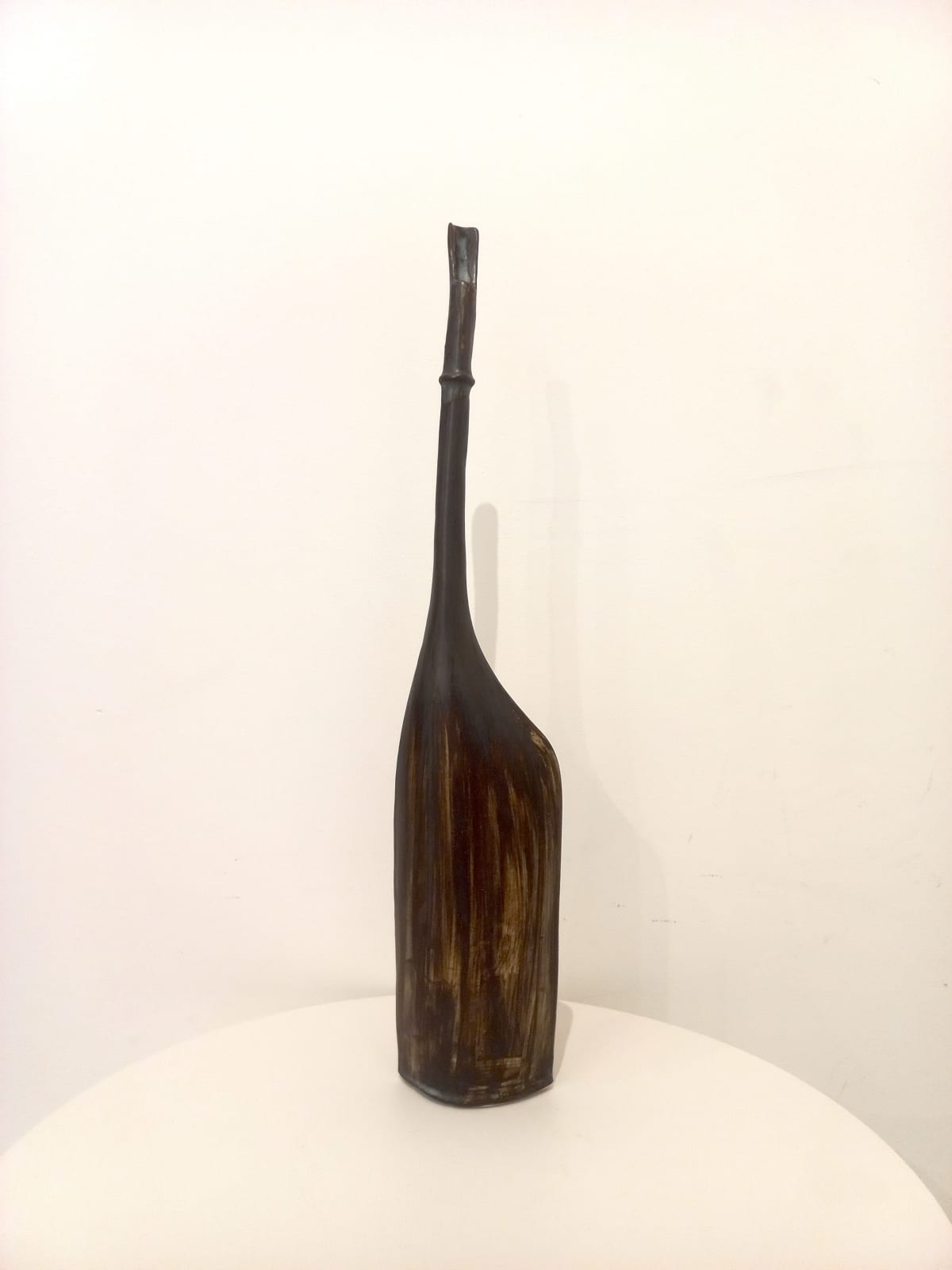Sue Mundy
Lignum I
White stoneware
Height: 40 cm
Sue Mundy's 'Lignum I' stands as a compelling study in ceramic minimalism, transforming white stoneware into an object that evokes both primitive tool and elegant sculpture. Standing at 40 cm...
Sue Mundy's "Lignum I" stands as a compelling study in ceramic minimalism, transforming white stoneware into an object that evokes both primitive tool and elegant sculpture. Standing at 40 cm tall, this slender, vessel-like form features a darkened, wood-like surface treatment that belies its ceramic nature. Mundy has masterfully manipulated the material to create an organic silhouette reminiscent of ancient implements—perhaps a paddle or ceremonial object—with a gracefully elongated neck that tapers to a slightly asymmetrical tip. The rich, variegated surface displays subtle tonal variations of deep browns and blacks, achieved through careful firing techniques that impart the appearance of aged timber or burnished bronze.
Organic Forms in Contemporary Ceramics
The piece challenges traditional ceramic boundaries by referencing natural, botanical forms while maintaining a distinctly contemporary sensibility. When displayed on a plinth or shelf, "Lignum I" creates a striking vertical presence that draws the eye upward, casting intriguing shadows that become part of the viewing experience. The work's Latin title, referring to wood, perfectly encapsulates Mundy's artistic exploration of material transformation—ceramic clay rendered to mimic organic matter. This sculptural piece would bring sophisticated presence to modern interiors, particularly in spaces that balance natural elements with clean architectural lines, creating a thoughtful focal point that invites contemplation of form, materiality and craft.
Organic Forms in Contemporary Ceramics
The piece challenges traditional ceramic boundaries by referencing natural, botanical forms while maintaining a distinctly contemporary sensibility. When displayed on a plinth or shelf, "Lignum I" creates a striking vertical presence that draws the eye upward, casting intriguing shadows that become part of the viewing experience. The work's Latin title, referring to wood, perfectly encapsulates Mundy's artistic exploration of material transformation—ceramic clay rendered to mimic organic matter. This sculptural piece would bring sophisticated presence to modern interiors, particularly in spaces that balance natural elements with clean architectural lines, creating a thoughtful focal point that invites contemplation of form, materiality and craft.




